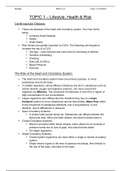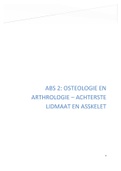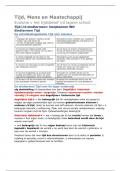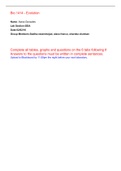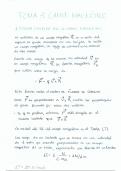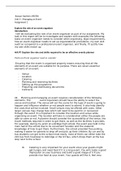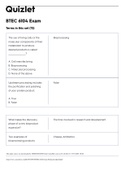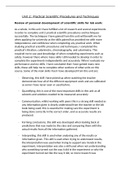Biology Nikhil 12Y Topic 1 Full Notes
TOPIC 1 – Lifestyle, Health & Risk
Cardiovascular Disease:
These are diseases of the heart and circulatory system. The main forms
being:
Coronary Heart Disease
Stroke
Heart Attack
Risk Factors are greatly important to CVDs. The following are thought to
increase the risk of a CVD:
Old Age – Less exercise and more time for narrowing of arteries.
Genetics (hereditary)
Smoking
Diet (LDL & HDLs)
Blood Pressure
Exercise
The Role of the Heart and Circulatory System:
The heart and circulatory system have one primary purpose, to move
substances around the body.
In smaller organisms, where diffusion distances are short, substances such as
carbon dioxide, oxygen and digestive products, can move around the
organism via diffusion. The movement of molecules or ions from a region of
high concentration to low concentration.
Larger organisms can’t diffuse like this, therefore they rely on a mass
transport system to move substances around their bodies. Mass Flow refers
to the movement of substances efficiently over a long distance, in one
direction, due to differences in pressure.
Open Circulatory Systems:
A simple heart pumps blood out. Substances can diffuse between the
blood and cells. When the heart relaxes, the blood is drawn back in.
Closed Circulatory Systems:
Blood is enclosed within blood vessels, which allows for an increase in
pressure levels due to size of gaps, thus blood travels faster.
For larger organisms.
Single Circulatory Systems:
Closed system organisms can have either a single or double circulatory
system.
Single means it goes to the area of gaseous exchange, then directly to
the rest of the body, and back to the heart.
, Biology Nikhil 12Y Topic 1 Full Notes
Double Circulatory Systems:
The right ventricle of the heart pumps deoxygenated blood to the lungs
where it undergoes gaseous exchange.
The oxygenated blood returns to the heart and it pumped a second
time via the right ventricle, out to the rest of the body.
Water & Principles:
Water is a polar molecule meaning it has an unevenly distributed electrical
charge. One end is slightly positively charged and one slightly negatively
charged.
The slightly negatively charged oxygen ends are attracted to the positive ones
to form weak hydrogen bonds between molecules. It is this bonding itself
that holds water together as a liquid at room temperature.
Because of waters dipole properties, it makes it ideal to be in blood plasma
and cytoplasm, as reactions can occur with it (hydrolytic enzymes, hydrolysis)
etc.
Ionic substances can easily dissolve in it too, as it has both charges.
Molecules that dissolve easily in water are simply surrounded by water
molecules, hence dissolve. These substances are said to be hydrophilic
(water-loving)
Hydrophobic substances do not dissolve in water.
Circulation & Blood Vessels:
The medium that is transported, blood, contains PLASMA:
This contains mainly water, alongside digested food molecules,
oxygen, carbon dioxide, urea, enzymes, hormones and many more.
The main propulsion and pressure within the system is generated is via
ventricular contraction.
A combination of vasoconstriction, vasodilatation and valves ensures
controlled distribution and direction of flow.
The muscle in blood vessel walls allows for this contraction. The muscle is
called smooth muscle.
Endothelium coats the inside surfaces of all these blood vessels, made up of
epithelial cells.
Arteries:
Carry blood away from the heart. Arterioles.
Contain collagen fibres which help limit the risk of rupture.
Blood leaves heart in pulses under high pressure and speed.
Veins:
Carry blood back to the heart. Venules
Contain valves.
Walls contain collagen fibres.
Rate of blood flow increases.

